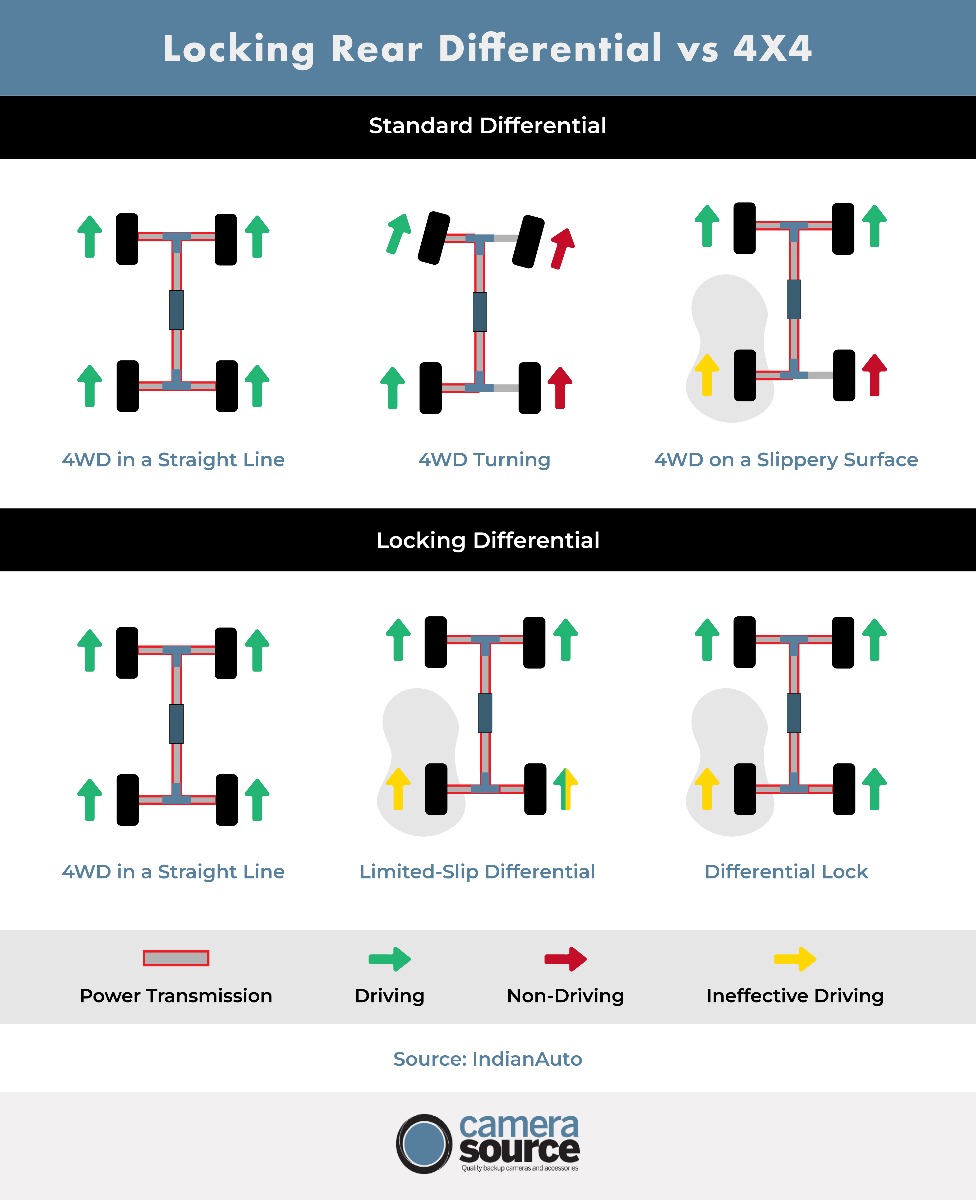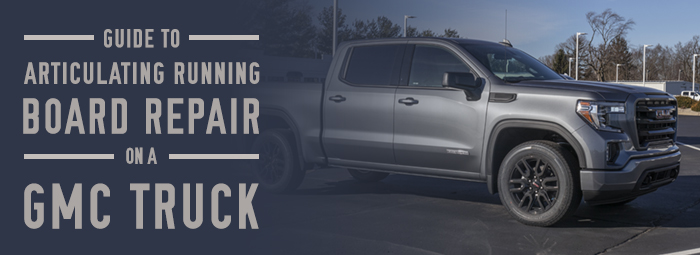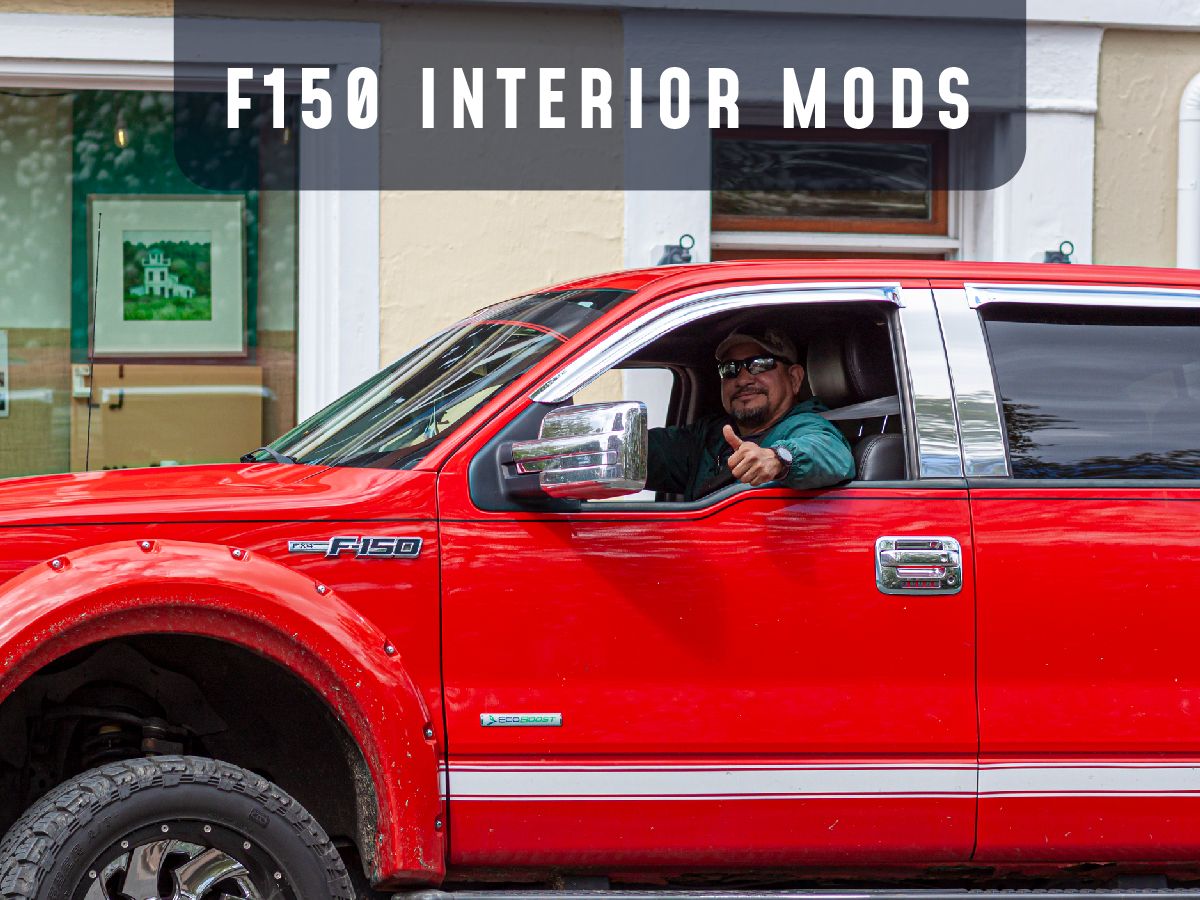On a vehicle with 4WD, each of the wheels receive power independently from the others. This can sometimes create problems when off-roading and maneuvering on difficult or slippery terrain, which is why differential locks exist.
Depending on where you’re going or what you’re driving, knowing the difference between the various differential locks on your vehicle and how they interact with your drive train will determine the difference between being stuck and having a smooth ride. We’ll outline the differences so you can better understand how everything works and have a smoother, safer, and better driving experience.
What is a differential?
The differential of a vehicle is the gears that send power to each of the wheels of the car. The four wheels on your 4X4 need to be able to run at different speeds, to enable your vehicle to turn corners efficiently. As such, all powered axles — front and rear in a 4WD — have a differential. This differential directs power to the wheel that is easiest to rotate — providing different power to each wheel according to its needs. Cars only have one differential, but 4X4 vehicles can have up to three differentials – front, center and rear.

How does an Electronic Locking Differential work?
A differential lock secures the differential in place, making all the wheels on the axle move at the same speed. This pushes equal power through to all wheels. Locking differentials, or “lockers”, allow you to lock the center, front, or rear differential to evenly distribute power and torque to all the wheels on the vehicle.
When you lock a differential, the axle can turn both wheels simultaneously regardless of any traction difference. Lockers are used to overcome a limitation of an open differential in off-road conditions by locking the center, front or rear differential to distribute power and torque evenly to both sides of the differential.
Locking Differential VS Open Differential
Open differentials are common among many commuter cars and trucks that aren’t used for off-roading or heavy towing. In an open differential, the amount of torque is divided equally between the wheels. This is advantageous for roads and even surfaces with traction.
The main benefit of this is the basic function of any differential — enabling the axle to turn more effectively and allow the outside wheel to move faster to cover more ground (in addition to being cheap to produce). The disadvantage is that if you’re driving in mud or snow, one wheel can spin with no traction while the wheel with better traction achieves half the overall torque the vehicle would’ve otherwise used to get unstuck.
During turns, a locking differential operates like an open differential — the wheels can rotate at different speeds. However, when traction is needed, the axles can be mechanically locked together forcing the wheels to rotate at the same speed. Unlike an open differential that allows both wheels to turn at different speeds when turning corners, the locker forces the axles to rotate at the same speed and is designed to only be engaged once traction is lost.
Most AWD and 4WD vehicles come with a center lock that allows you to split the speed difference between the front and rear axle, and often these locks are designed to be engaged when you’re about to lose traction. Keep in mind that there are both manual and automatic locking differentials. Manual locking differentials can be activated at-will, while automatic locking differentials turn on whenever sufficient power is sent to the wheels.
Manual VS Automatic Locking Differentials
Automatic differential lockers are ones that automatically lock when the throttle is applied. Selectable differentials require the driver to pull a cable or push a button to engage. Obviously, the manual locker requires more input and gives the driver more control. Automatic differential locks are also typically a little more difficult to maintain.
Locking Differential VS Limited Slip Differentials
The primary difference between an automatic locking differential and a limited slip differential (LSD) is that while the automatic differential will allow the inside wheel to rotate freely, the LSD will allow some slipping between the side gears of the differential, allowing wheels to get equal traction even though one might be spinning faster than the other.
When to Use a Differential Lock
At first it might appear that vehicles with limited slip differentials are always the right choice for drivers who want to maximize performance and tire value at the same time. While this is often true, there are some cases where a locking rear differential is preferable.You’ll want to use your locking differential when you go off-road, or are planning on heading over difficult terrains.
- Wet, icy, or snowy roads: Locking differentials are preferred where one expects to encounter a variance in traction between wheels. If you’re on the road, they’re mostly useful when the weather is working against you.
- Off-road & rough terrain: Locking differentials can be useful on the job site, where they make it easier to get moving on uneven ground, especially when carrying a heavy load. In off-road-focused vehicles, a locking differential is certainly preferred.
When NOT to Use a Differential Lock
You should not engage a differential lock for most on-road driving, unless weather conditions like snow or ice have made it necessary to have extra traction. Don’t use differential locks when:
- You’re moving fast and trying to turn a corner
- You’re on a side slope
- You have all wheels on the ground
5 Common Questions About Differential Locks
1. Do all 4X4 have differentials?
Not necessarily. Many 4x4s come with differential locks, but you’ll want to consult with the manufacturer of the vehicle or a salesperson to make sure this is the case before buying.
2. Is rear differential lock good for snow?
Usually, yes, especially when driving uphill in conditions that might cause you to slip or slide.
3. Should I use differential locks in sand?
Depending on what kind of terrain you’re summiting, and how slippery the sand is, a rear differential is likely a must in sand.
4. What's better: electronic locker or air locker?
While air lockers are generally faster and easier to operate than electronic lockers, they require a compressor to be on board the vehicle which is charged and ready to go. This generally makes them less reliable, and electronic lockers are often the preferred method of doing business.
5. Does a 4x2 have a differential lock?
Just like 4x4s, some 4x2s have a differential lock, and thus can also be better outfitted for off-road exploration.
Backup Cameras for 4x4s
No matter what size vehicle you’re working with, the right backup camera can save your bumpers, fenders, doors, and more from dents, dings, scratches, or worse.. At Camera Source, we have the right cameras for any job, whether you’re hauling a trailer or off-roading. Get in touch with us to figure out what’ll work best for you, or start browsing our products today.








